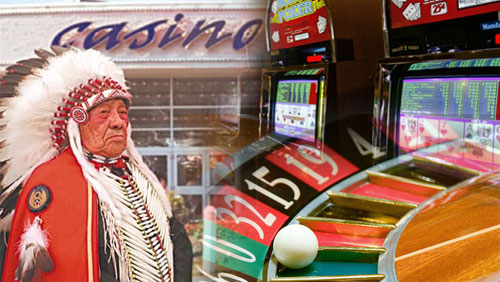 The U.S. tribal gaming industry posted $28.5b gross gaming revenue last year, marking the fifth consecutive year of growth since 2009.
The U.S. tribal gaming industry posted $28.5b gross gaming revenue last year, marking the fifth consecutive year of growth since 2009.
The National Indian Gaming Commission (NIGC) has released data showing the Indian gaming industry revenue up 1.5% to $28.5b in 2014 compared to $28b last year.
“Overall, the Indian gaming industry remains stable. Stability comes from solid operations, strong tribal management, and effective regulation by the Indian gaming’s regulatory community, which includes the NIGC and more than 5,400 tribal regulators,” said NIGC Chairman Jonodev Chaudhuri. “Sound regulation is an essential pillar of support for the critical avenue of self-sufficiency and self-determination that Indian gaming has proven for so many tribal nations. Sound regulation preserves public confidence, protects tribal assets, and promotes a safe and fair environment for all people who interact with the industry.”
In 2014, 72% of tribal gaming operations showed year-on-year improvement, 68% of which showed moderate growth.
The NIGC also provided regional gross revenue stats from seven NIGC regions—Portland, Sacramento, Phoenix, St. Paul, Tulsa, Washington D.C., and Oklahoma City—across the country, which includes 450 gaming establishments, associated with nearly 242 tribes across 28 states.
The Sacramento region, which comprises 68 tribal casinos in California and two gaming sites with about 100 slot machines in Northern Nevada, accounted for $305m gaming revenue, a 4.4% increase year-on-year. The Oklahoma City region, which consist 65 gaming operations in Texas and Western Oklahoma, was up 7.5% to $141m, the biggest year-on-year revenue percentage increase.
Tribal Financial Advisors CEO Kristi Jackson said that the revenue increase is a positive sign for the industry, however, lenders look at individual markets and not so much the national numbers.
In 2014, there are 88 Indian gaming operations which reported gaming revenue less than $3m, 76 operations with revenue between $3m and $10m and 96 operations between $10m and $25m.
“The Indian gaming industry is driven by the demographics of each area. Many tribal gaming operations are in rural parts of the country where jobs are greatly needed for both natives and non-natives alike,” said Chaudhuri. “Tribal gaming revenue – unlike commercial gaming – is heavily regulated, purposed specifically to support Tribal governmental services, to benefit Indian Nations.”
Many Indian tribes use gaming revenues to fund economic development activities on reservations and more effective provision of tribal government services, including health services, early education programs and language and cultural preservation activities.